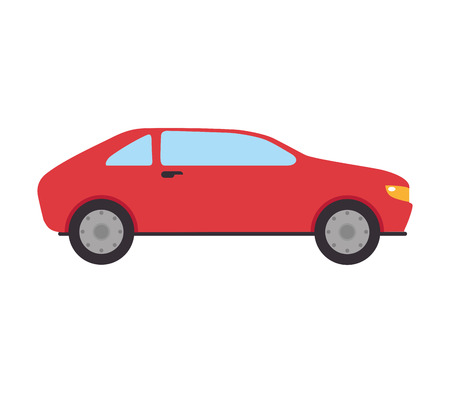1. Understanding Liability vs. Full Coverage Car Insurance
What Is Liability Car Insurance?
Liability car insurance is the most basic form of auto insurance required by law in most U.S. states. It helps cover the costs if you cause an accident that results in injury or property damage to someone else. However, it does not pay for your own injuries or vehicle repairs. There are two main parts:
- Bodily Injury Liability: Pays for medical expenses and legal fees if you injure someone in an accident.
- Property Damage Liability: Covers damages to another persons vehicle or property.
What Is Full Coverage Car Insurance?
Full coverage isn’t a specific policy, but a combination of coverages designed to protect you more fully. It typically includes liability, plus:
- Collision Coverage: Pays for damage to your car after a collision, regardless of who’s at fault.
- Comprehensive Coverage: Protects against non-collision events like theft, vandalism, fire, or natural disasters.
This means full coverage can help pay for your own car repairs or replacement, as well as damage you might cause to others.
Key Differences: Liability vs. Full Coverage
| Liability Insurance | Full Coverage Insurance | |
|---|---|---|
| Covers Your Damages? | No | Yes (with collision & comprehensive) |
| Covers Others’ Damages? | Yes | Yes |
| Required by Law? | Yes (in most states) | No (optional, but often required by lenders) |
| Covers Theft/Natural Disasters? | No | Yes (with comprehensive) |
| Monthly Cost | Lower | Higher |
Why Choose One Over the Other?
The choice between liability and full coverage depends on several factors. If you have an older car that isn’t worth much, liability may be enough. But if you drive a newer vehicle or have a loan or lease, full coverage can offer added peace of mind and meet lender requirements. Ultimately, it’s about balancing protection with what fits your budget and needs as a U.S. driver.
2. Average Costs Across the U.S.
Understanding National Averages
When it comes to car insurance, U.S. drivers often wonder how much they should expect to pay for liability and full coverage. Let’s break down the average costs across the country and look at some key factors that influence your premiums.
National Average Premiums
| Coverage Type | Average Annual Cost |
|---|---|
| Liability Only | $650 |
| Full Coverage | $1,700 |
Keep in mind these are national averages—your actual rate may be higher or lower depending on where you live and other factors.
How Geography Impacts Your Rate
Your location plays a big role in how much you pay for car insurance. For example, drivers in densely populated states like New York, Michigan, or Florida tend to pay more due to higher accident rates and claims. In contrast, rural states like Iowa or Vermont usually have lower average premiums.
Example: Average Annual Full Coverage Cost by State
| State | Average Cost |
|---|---|
| California | $2,100 |
| Texas | $1,800 |
| Ohio | $1,200 |
| Florida | $2,600 |
| Iowa | $1,100 |
The Role of Age in Insurance Rates
Your age is another important factor. Younger drivers—especially those under 25—often pay much more due to their lack of experience behind the wheel. As you get older and maintain a clean driving record, your rates typically go down.
Average Annual Full Coverage Premium by Age Group
| Age Group | Average Cost |
|---|---|
| Teen Drivers (16-19) | $4,500+ |
| Young Adults (20-29) | $2,200 |
| Adults (30-65) | $1,600 |
| Seniors (65+) | $1,700 |
Vehicle Type Makes a Difference Too
The kind of car you drive also affects your insurance premium. Sports cars or luxury vehicles usually cost more to insure than sedans or minivans because they are more expensive to repair or replace.
Sample Annual Premiums by Vehicle Type (Full Coverage)
| Vehicle Type | Average Cost |
|---|---|
| Sedan (e.g., Toyota Camry) | $1,400 |
| SUV (e.g., Honda CR-V) | $1,500 |
| Sports Car (e.g., Ford Mustang) | $2,500+ |
No matter where you live or what you drive, it’s smart to shop around and compare quotes so you can find the best rate for your needs.

3. Factors That Influence Your Premium
When it comes to car insurance in the U.S., your premium—the amount you pay for coverage—isn’t set in stone. Insurance companies look at several personal and vehicle-related details to decide how much you’ll pay each month. Let’s break down some of the main factors that can impact your costs.
Driving History
Your driving record is a big deal for insurance providers. If you have a clean record, you’re more likely to get lower rates. Accidents, speeding tickets, or DUIs can push your premiums higher since insurers see you as a bigger risk.
How Driving History Affects Premiums
| Driving Record | Impact on Premium |
|---|---|
| No accidents or violations | Lower premium |
| One minor ticket | Slight increase |
| Multiple accidents/violations | Significant increase |
| DUI or major violation | Highest increase |
Credit Score
Many states allow insurance companies to use your credit score when calculating your rate. A better credit score usually means a lower premium because insurers believe people with good credit are less likely to file claims.
Credit Score Categories & Impact
| Credit Score Range | Premium Impact |
|---|---|
| Excellent (750+) | Lowest rates |
| Good (700-749) | Low rates |
| Fair (650-699) | Moderate rates |
| Poor (<650) | Highest rates |
Location Matters
Your ZIP code plays a surprisingly big role in how much you pay. Urban areas with higher traffic and crime rates typically have higher premiums compared to rural locations where accidents and thefts happen less often.
Example: City vs. Suburb vs. Rural Premiums (Average Annual Rates)
| Location Type | Estimated Annual Premium* |
|---|---|
| Urban (e.g., Los Angeles, CA) | $2,100+ |
| Suburban (e.g., Plano, TX) | $1,400-$1,700 |
| Rural (e.g., Ames, IA) | $1,000-$1,200 |
*These are sample estimates and may vary by provider.
Your Vehicles Specifics
The kind of car you drive affects your insurance cost too. Newer cars, luxury vehicles, and sports cars usually cost more to insure because they’re pricier to repair or replace. Safety features and anti-theft devices can help lower your premium.
Vehicle Factors That Matter Most:
- Make & Model: Sports cars and luxury models tend to be more expensive.
- Year: Newer vehicles often have higher premiums.
- Safety Features: Airbags, anti-lock brakes, and alarms can reduce costs.
- Mileage: The more you drive each year, the more you might pay.
If you want to keep your insurance costs as low as possible, it helps to understand these key factors. By knowing what insurers look at—and maybe making some changes—you can potentially save money on both liability and full coverage car insurance in the U.S.
4. State Requirements and Minimum Coverage Laws
When it comes to car insurance in the United States, one of the most important things drivers need to understand is that every state has its own rules about what kind of coverage is required. Whether you’re looking at liability-only policies or considering full coverage, knowing your state’s minimum requirements can help you stay legal and avoid fines.
Why Do States Have Different Minimums?
Car insurance laws are made at the state level, not the federal level. That means each state sets its own rules for how much insurance you need to drive legally. These differences are based on local laws, accident rates, and even the cost of medical care in each region. Some states require higher limits because they want to make sure there’s enough coverage for injuries and property damage if there’s an accident.
Liability vs. Full Coverage: What’s Required?
Most states only require liability insurance. This covers damages or injuries you cause to others in an accident but does not cover your own car or injuries. Full coverage—usually a combination of liability, collision, and comprehensive insurance—is optional in most states but may be required by your lender if you have a car loan or lease.
Typical State Minimum Liability Requirements
| State | Bodily Injury per Person | Bodily Injury per Accident | Property Damage |
|---|---|---|---|
| California | $15,000 | $30,000 | $5,000 |
| Texas | $30,000 | $60,000 | $25,000 |
| Florida | No requirement* | No requirement* | $10,000 (Property Damage Liability) |
| New York | $25,000 | $50,000 | $10,000 |
| Illinois | $25,000 | $50,000 | $20,000 |
*Florida requires Personal Injury Protection (PIP) instead of bodily injury liability.
Other Common State Requirements
- Uninsured/Underinsured Motorist Coverage: Many states require this coverage to protect you if you’re hit by a driver who doesn’t have enough insurance.
- Personal Injury Protection (PIP): Required in “no-fault” states like Florida and Michigan to cover medical expenses regardless of who is at fault.
- Medical Payments Coverage: Optional in most states but required in a few.
What Happens If You Don’t Meet State Minimums?
If you get pulled over or are involved in an accident without the required insurance, you could face fines, license suspension, or even jail time depending on your state’s laws. Plus, driving without enough coverage puts your personal finances at risk if you cause an accident.
5. Tips for Choosing the Right Policy and Saving Money
Understand Your Coverage Needs
Before you buy car insurance, it’s important to figure out exactly what kind of coverage you need. Liability insurance is required in most states, but if you have a newer or more valuable vehicle, full coverage (which includes comprehensive and collision) might make sense. Think about your driving habits, your budget, and how much risk you’re willing to take on yourself.
Compare Quotes from Multiple Insurers
Insurance rates can vary a lot between companies. Get quotes from at least three different providers before making a decision. Many insurers offer free online tools that make comparing policies simple and quick.
Sample Comparison Table for Liability and Full Coverage Rates
| Insurance Company | Liability Only (Annual) | Full Coverage (Annual) |
|---|---|---|
| Company A | $700 | $1,500 |
| Company B | $650 | $1,450 |
| Company C | $800 | $1,600 |
Take Advantage of Discounts and Bundling
Ask about discounts that may be available—these can include safe driver discounts, good student discounts, or savings for taking a defensive driving course. If you also need home or renters insurance, bundling policies with the same company can often lead to significant savings.
Common Insurance Discounts in the U.S.
| Discount Type | Description |
|---|---|
| Multi-policy/Bundling | Combine auto with home/renters insurance for lower rates. |
| Safe Driver | No recent accidents or violations on record. |
| Good Student | High school or college students with strong grades. |
| Defensive Driving Course | Completed an approved safety course. |
| Low Mileage | If you drive less than average per year. |
Select Appropriate Deductibles and Limits
The deductible is what you pay out-of-pocket when filing a claim. Choosing a higher deductible usually lowers your premium, but make sure it’s an amount you could comfortably afford. Also, review your liability limits to ensure they meet state requirements and protect your assets in case of an accident.
Review Your Policy Regularly
Your insurance needs can change over time. Review your policy each year—especially after major life events like moving, buying a new car, or getting married—to make sure you’re still getting the best deal and right level of protection.

